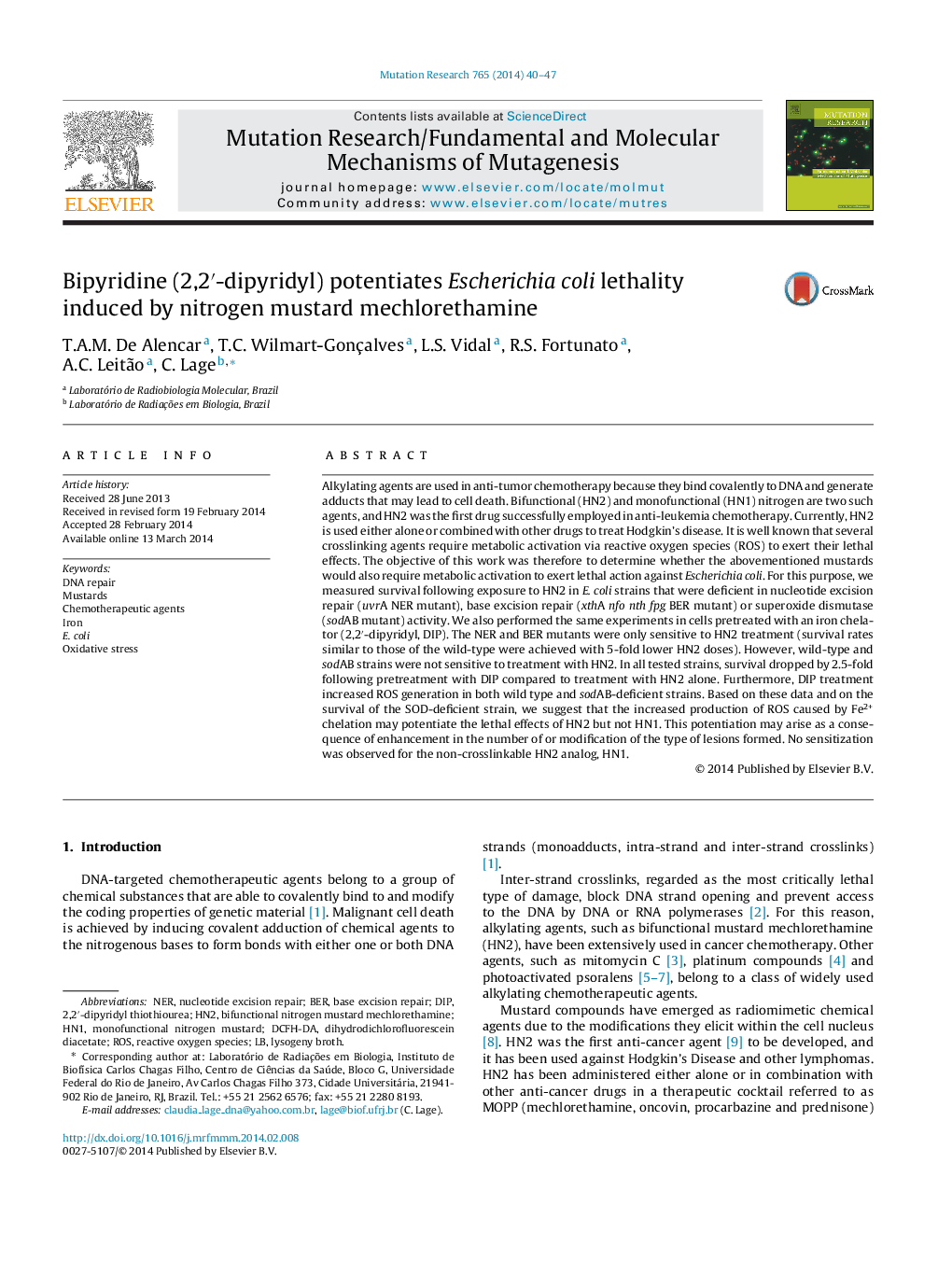| Article ID | Journal | Published Year | Pages | File Type |
|---|---|---|---|---|
| 2146333 | Mutation Research/Fundamental and Molecular Mechanisms of Mutagenesis | 2014 | 8 Pages |
•Reduction of Fe2+ ensues a respiratory burst to reduce the oxidized iron pool.•Through Harber–Weiss recycling, superoxide electrons can reduce oxidized iron.•Redox imbalance sensitized repair proficient Escherichia coli to mustard lethal crosslinks.•A stronger synergism impacted survival of a superoxide dismutase-deficient strain.•Anti-cancer cocktails added of an iron chelator may impact hypoxia and genotoxicity.
Alkylating agents are used in anti-tumor chemotherapy because they bind covalently to DNA and generate adducts that may lead to cell death. Bifunctional (HN2) and monofunctional (HN1) nitrogen are two such agents, and HN2 was the first drug successfully employed in anti-leukemia chemotherapy. Currently, HN2 is used either alone or combined with other drugs to treat Hodgkin's disease. It is well known that several crosslinking agents require metabolic activation via reactive oxygen species (ROS) to exert their lethal effects. The objective of this work was therefore to determine whether the abovementioned mustards would also require metabolic activation to exert lethal action against Escherichia coli. For this purpose, we measured survival following exposure to HN2 in E. coli strains that were deficient in nucleotide excision repair (uvrA NER mutant), base excision repair (xthA nfo nth fpg BER mutant) or superoxide dismutase (sodAB mutant) activity. We also performed the same experiments in cells pretreated with an iron chelator (2,2′-dipyridyl, DIP). The NER and BER mutants were only sensitive to HN2 treatment (survival rates similar to those of the wild-type were achieved with 5-fold lower HN2 doses). However, wild-type and sodAB strains were not sensitive to treatment with HN2. In all tested strains, survival dropped by 2.5-fold following pretreatment with DIP compared to treatment with HN2 alone. Furthermore, DIP treatment increased ROS generation in both wild type and sodAB-deficient strains. Based on these data and on the survival of the SOD-deficient strain, we suggest that the increased production of ROS caused by Fe2+ chelation may potentiate the lethal effects of HN2 but not HN1. This potentiation may arise as a consequence of enhancement in the number of or modification of the type of lesions formed. No sensitization was observed for the non-crosslinkable HN2 analog, HN1.
